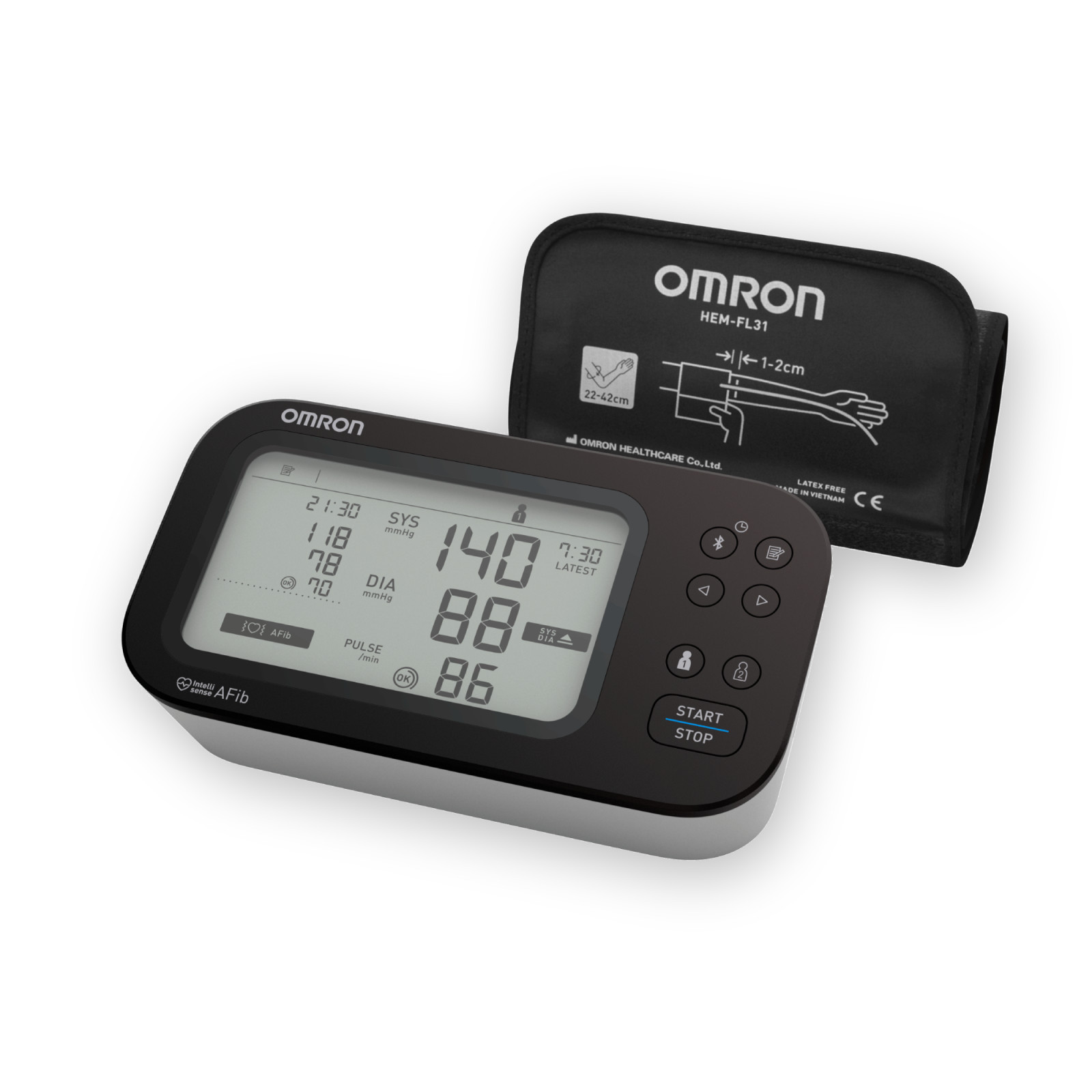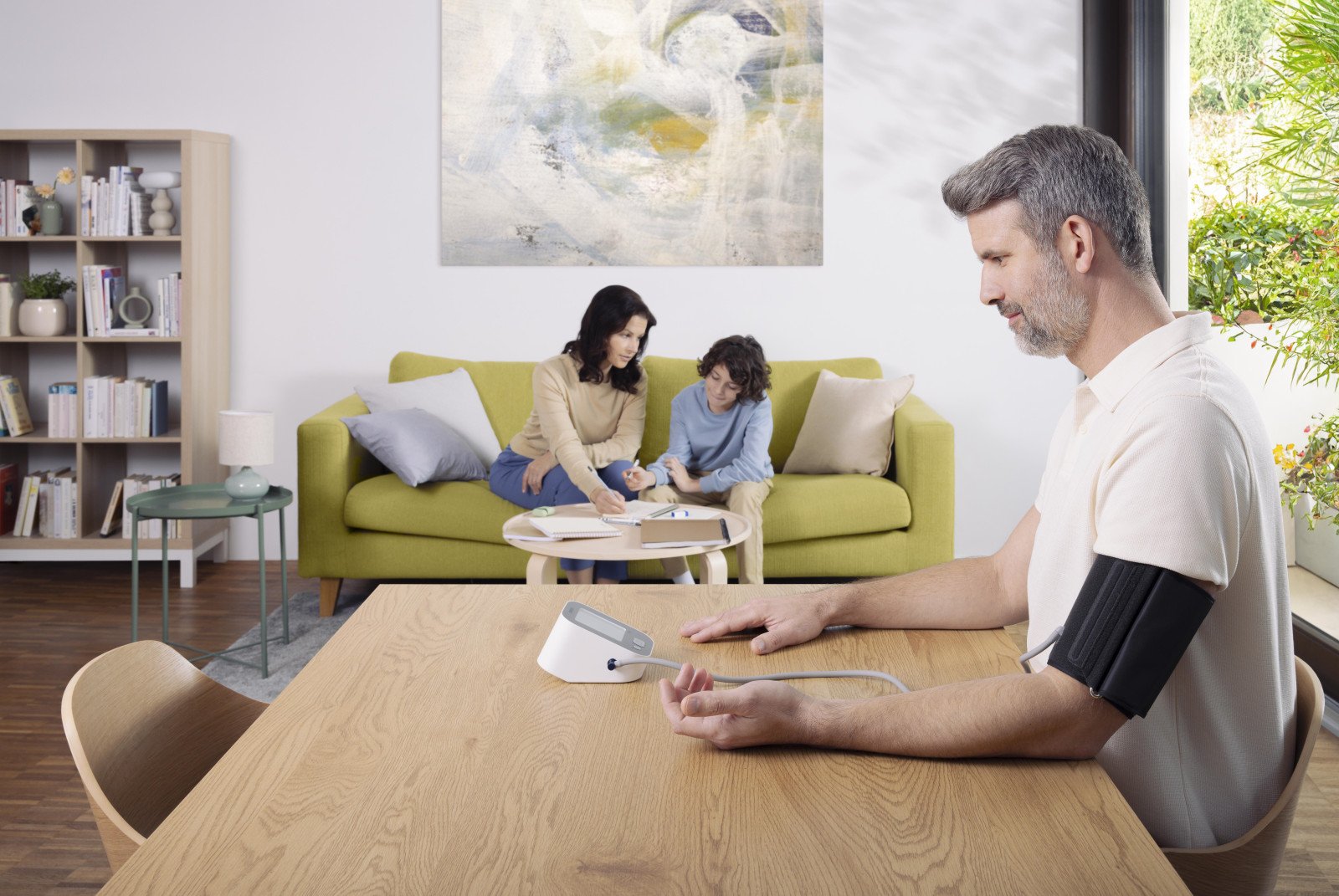
Cardiovascular Topics
Validated Blood Pressure monitors matter more for some patient populations
In managing hypertension, certain patient populations face heightened risks and complexities, requiring precise monitoring and management

In managing hypertension, certain patient populations face heightened risks and complexities, requiring precise monitoring and management. These groups include:
• Obese patients
• Pregnant patients (with and without preeclampsia)
• Diabetic patients
For these populations, effective blood pressure (BP) control is essential in mitigating the risks associated with severe health complications. Hypertension aggravates issues that can negatively affect both quality and longevity of life, emphasizing the need for reliable BP measurement tools. Clinically validated BP monitors deliver more reliable and accurate readings, which are particularly critical for these vulnerable groups.
Hypertensive risk specific groups
Hypertension presents distinct challenges for obese, pregnant, and diabetic patients, as each demographic experiences unique physiological impacts that amplify the dangers of high BP.
Obese individuals: increased body mass can lead to elevated cardiac output and vascular resistance, resulting in higher BP. The strain on the heart raises the likelihood of cardiovascular events if left unmanaged. Moreover, obesity is often linked to sleep apnoea, which can further elevate BP and worsen cardiovascular stress.1
Pregnancy: during pregnancy, significant haemodynamic changes occur, making BP monitoring vital, especially for patients with preeclampsia. This condition is marked by high BP and can lead to severe complications, including organ damage and preterm birth. Timely and precise BP monitoring during pregnancy is critical for identifying and managing any complications as early as possible.1,2
Diabetic patients: hypertension acts as a risk multiplier for diabetes, significantly raising the chances of kidney disease and cardiovascular events. Diabetes can impair blood vessel flexibility, complicating BP regulation, and underscoring the importance of regular and accurate BP assessments. The interplay between high blood pressure and diabetes amplifies health risks, making effective management crucial In fact, it is estimated that high BP affects over two-thirds of individuals with Type II diabetes, making the need for reliable BP measurements key.1
Why BP monitoring is crucial in groups at increased risk
Accurate BP monitoring is key for these groups; given that early detection and ongoing management of hypertension can significantly improve health outcomes.
For instance, in pregnancy, where rapid changes in BP can signal severe conditions like preeclampsia, timely BP readings can guide treatment to prevent complications. Pregnant women with preeclampsia need frequent monitoring because a sudden rise in BP can put both mother and foetus at risk, underscoring the need for validated BP devices that offer reliable measurements under such conditions.2
Similarly, for diabetic patients, hypertension increases the risk of complications such as nephropathy and retinopathy. Regular and accurate BP readings are therefore crucial to protect against these secondary health issues.
Obese patients benefit from BP monitoring as well, as it can guide lifestyle interventions and medication adjustments to help prevent the adverse cardiovascular effects often associated with high BP. Clinically validated BP monitors provide consistent readings, allowing for more precise adjustments in care.
How validated BP monitors can help
Validated BP monitors are essential for these high-risk groups, as they offer a level of reliability and consistency needed to manage complex health conditions effectively. Clinically validated devices are tested under conditions that mirror real-life scenarios, ensuring accuracy even in special populations with unique physiological needs.
Home monitoring is one effective strategy for managing hypertension, allowing patients to track their BP daily. Home monitoring devices such as the M7 Intelli IT AFib, X7 Smart AFib and the M6 Comfort AFib are particularly useful, having been clinically validated for patients with Type II diabetes and pregnant women with or without preeclampsia. These devices’ validations give healthcare providers confidence in the accuracy of the readings, allowing for better-informed decisions on treatment adjustments.1
In addition, the M4 Intelli IT and the M3 Comfort blood pressure monitors, which are validated for pregnancy and diabetes, offer similar advantages. By using devices specifically validated for these populations, patients and providers can work together to manage hypertension more effectively and adjust treatment as necessary based on reliable readings.1
Plus, the RS7 Intelli IT which is a blood pressure monitor clinically validated for obesity. This device measures BP via the wrist and pairs with the OMRON connect app to help optimise data recording. It’s worth noting that a diagnostic review of measuring hypertension in people with obesity and a large arm circumference, concluded that where a standard size blood pressure monitor cuff is not appropriate, measuring blood pressure at the wrist should be considered.3
Furthermore, it’s no coincidence that the NHS recently published (November 5th 2024) a review of recommended blood pressure monitors and within the 5 devices reviewed, 2 of them were OMRON BP monitors.4
In addition, it’s worth mentioning www.stridebp.org an international scientific non-profit organisation of hypertension experts. OMRON BP monitors are listed on the website due to the fact that they’re clinically validated for their accuracy.
Gain new insights with upcoming OMRON Academy modules
Do please look out for new OMRON Academy modules that will expand on the importance of clinically validated BP monitoring devices – particularly when treating and managing patients who are obese, have Type II diabetes, or are pregnant.
Conclusion
For patients who are obese, pregnant (especially with preeclampsia), or diabetic, clinically validated BP monitors are invaluable tools in managing hypertension. These devices provide the reliability needed to monitor BP fluctuations accurately, enabling early intervention and preventing severe complications. Given the heightened risks faced by these groups, investing in clinically validated BP monitors is not merely a recommendation; it is a critical step toward ensuring better health outcomes and safeguarding lives.
References
¹ Chahine, Mirna N., et al. “Validation of BP Devices QardioArm® in the General Population and Omron M6 Comfort® in Type II Diabetic Patients according to the European Society of Hypertension International Protocol (ESH-IP).” Medical Devices: Evidence and Research, vol. Volume 11, Dec. 2017, pp. 11–20, https://doi.org/10.2147/mder.s142126. Accessed October 2024.
² Zelveian, Parounak., et al. “Clinical Accuracy of the Withings BPM Connect for Self-Blood Pressure Measurements in Pregnancy and Pre-Eclampsia: Validation according to the Association for the Advancement of Medical Instrumentation/European Society of Hypertension/International Organization for Standardization Universal Standard.” Vascular Health and Risk Management, vol. Volume 18, Mar. 2022, pp. 181–189, https://doi.org/10.2147/vhrm.s351313. Accessed October 2024.
³ Irving, Greg., et al. “Which Cuff Should I Use? Indirect Blood Pressure Measurement for the Diagnosis of Hypertension in Patients with Obesity: A Diagnostic Accuracy Review.” BMJ Open, vol. 6, no. 11, Nov. 2016, p. e012429, https://doi.org/10.1136/bmjopen-2016-012429.
⁴ Health&Living. The Best Blood Pressure Monitors of 2024. Available at: https://healthandliving.net/best-blood-pressure-monitors-in-the-uk-2024. Accessed November 2024.







